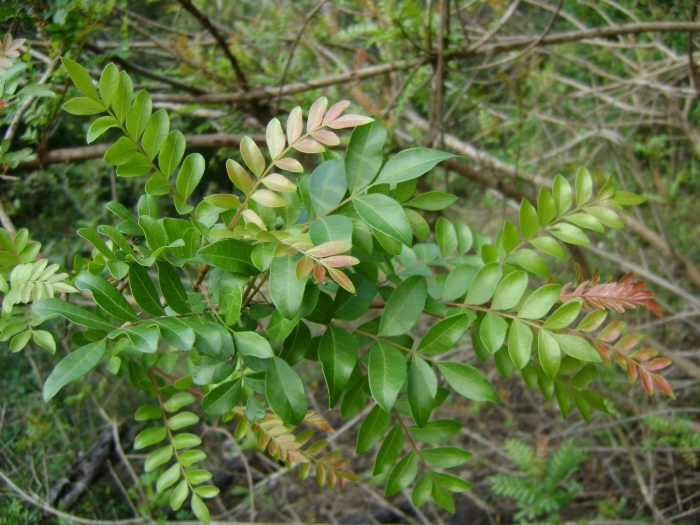Mexican Pistache
(Pistacia mexicana)
Mexican Pistache (Pistacia mexicana)
/
/

iNaturalist user: tereso30
CC BY 4.0
Image By:
iNaturalist user: tereso30
Recorded By:
Copyright:
CC BY 4.0
Copyright Notice:
Photo by: iNaturalist user: tereso30 | License Type: CC BY 4.0 | License URL: https://creativecommons.org/licenses/by/4.0 | Uploader: Loopy30 | Publisher: Wikimedia Commons | Title: Pistacia_mexicana.jpg | Notes: |


























Estimated Native Range
Summary
Pistacia mexicana, commonly known as Mexican Pistache, is a deciduous tree native to arid and semi-arid regions, including the dry forests and scrublands of Central America, Mexico, and Texas. It is a medium-sized tree that can reach up to 49 feet (15 meters) in height, with a spreading canopy that provides light shade. The tree is characterized by its compound leaves that turn a vibrant orange-red in the fall, adding seasonal interest to the landscape. The inconspicuous flowers are followed by small, red to blue-black drupes that are attractive to birds and other wildlife, although the seeds are often not viable.
Mexican Pistache is valued for its drought tolerance and is used in xeriscaping—a landscaping method that reduces or eliminates the need for supplemental water from irrigation. It is also planted as an ornamental tree in urban areas due to its attractive foliage and relatively small size, which makes it suitable for street medians and residential gardens. This species thrives in full sun and can adapt to a variety of soil types, provided they have good drainage. While it is low-maintenance and resistant to many pests and diseases, it is susceptible to Texas root rot in poorly drained soils.CC BY-SA 4.0
Mexican Pistache is valued for its drought tolerance and is used in xeriscaping—a landscaping method that reduces or eliminates the need for supplemental water from irrigation. It is also planted as an ornamental tree in urban areas due to its attractive foliage and relatively small size, which makes it suitable for street medians and residential gardens. This species thrives in full sun and can adapt to a variety of soil types, provided they have good drainage. While it is low-maintenance and resistant to many pests and diseases, it is susceptible to Texas root rot in poorly drained soils.CC BY-SA 4.0
Plant Description
- Plant Type: Shrub, Tree
- Height: 15-20 feet
- Width: 10-15 feet
- Growth Rate: Moderate
- Flower Color: N/A
- Flowering Season: Spring
- Leaf Retention: Deciduous
Growth Requirements
- Sun: Full Sun
- Water: Low
- Drainage: Fast, Medium
Common Uses
Bird Garden, Deer Resistant, Low Maintenance
Natural Habitat
native to arid and semi-arid regions, including the dry forests and scrublands of Central America, Mexico, and Texas
Other Names
Common Names: Mexican Pistachio , Mexican Pistache , Wild Pistachio
Scientific Names: Pistacia mexicana , Pistacia texana , Rhus mexicana , Lentiscus mexicana
GBIF Accepted Name: Pistacia mexicana Kunth